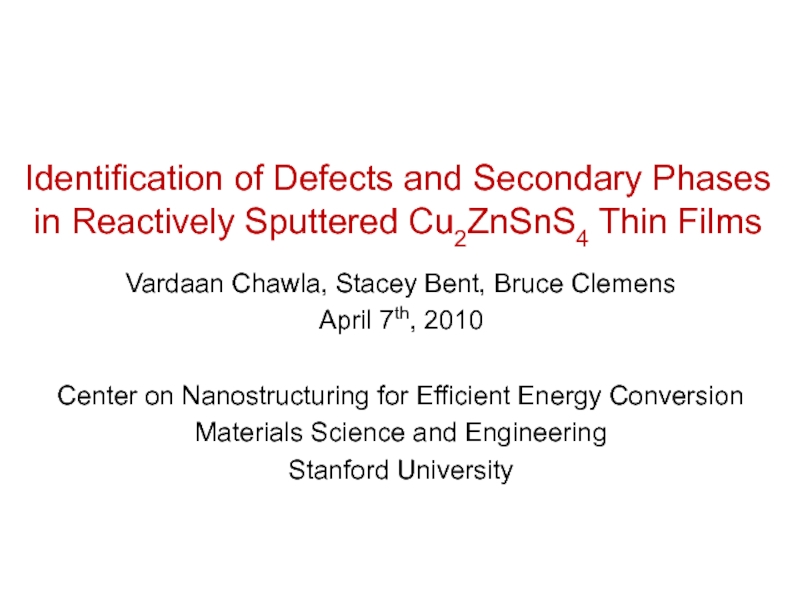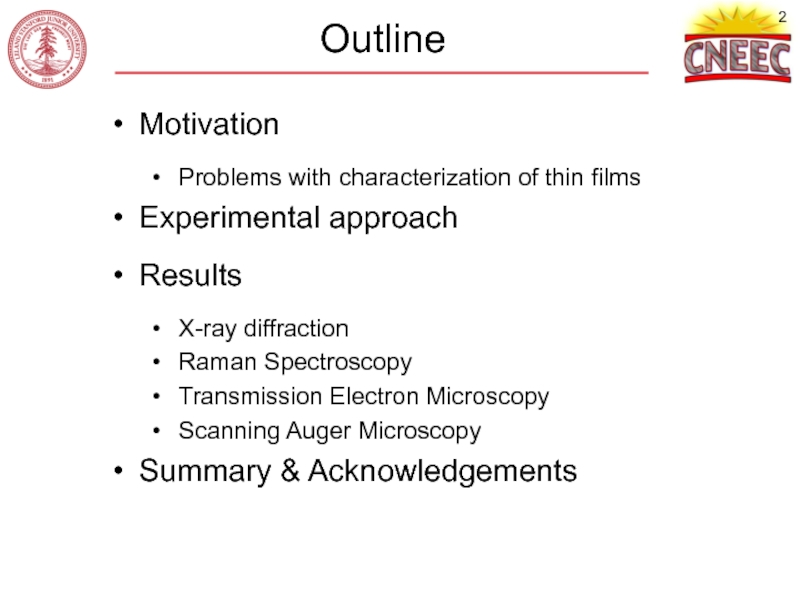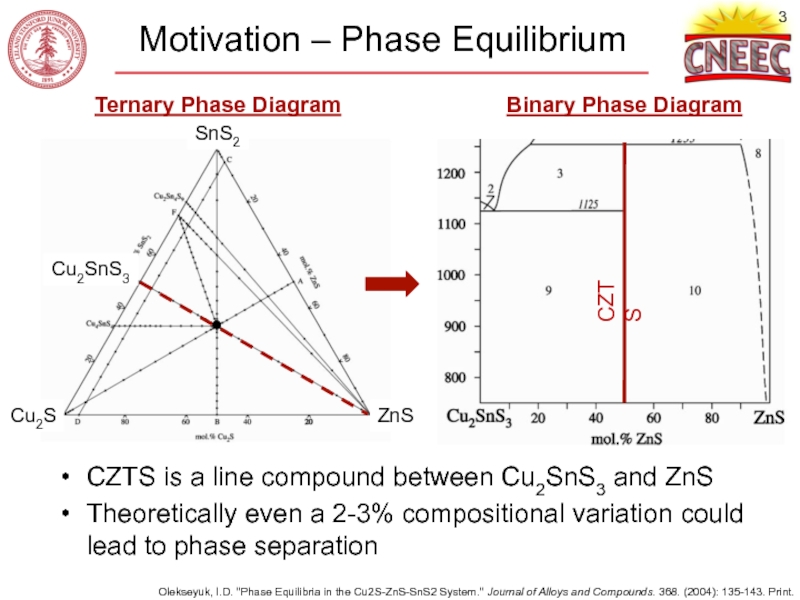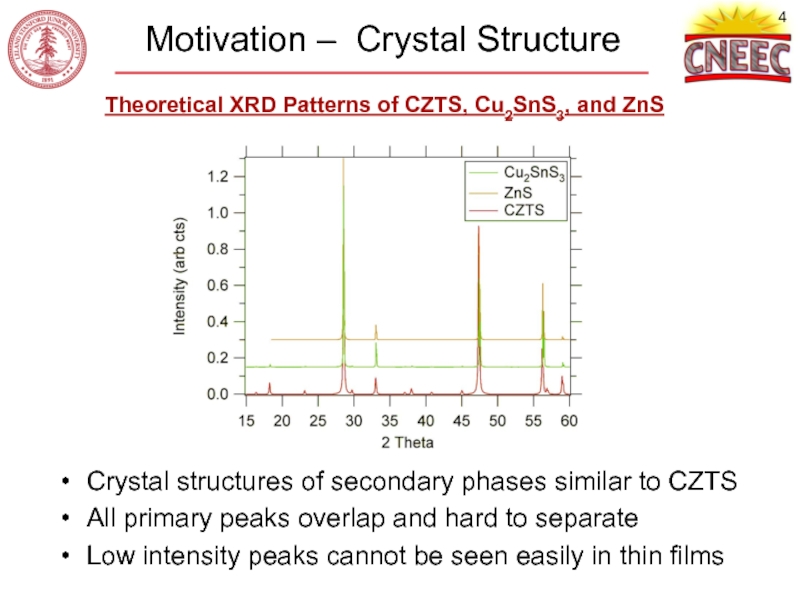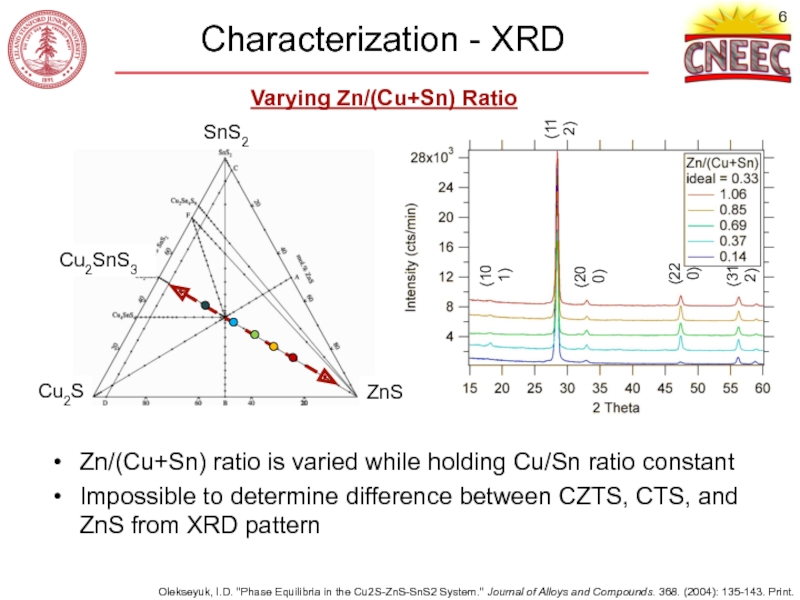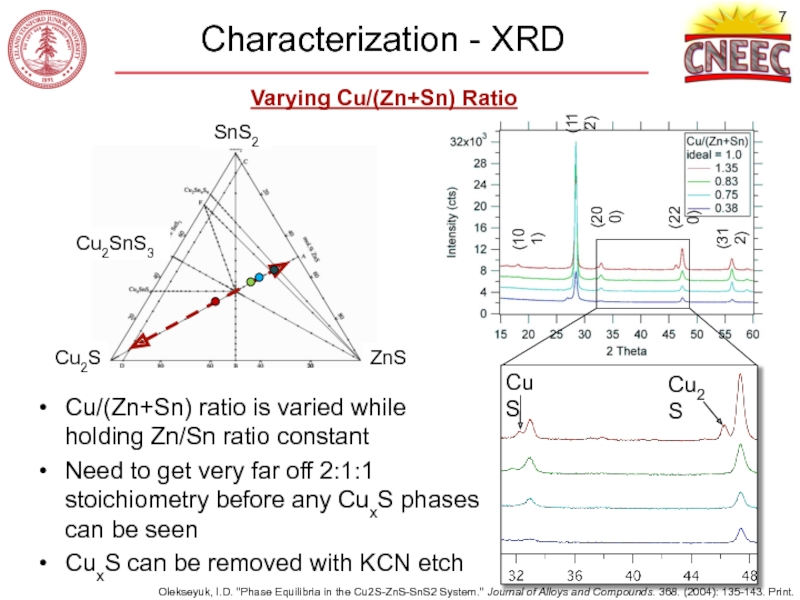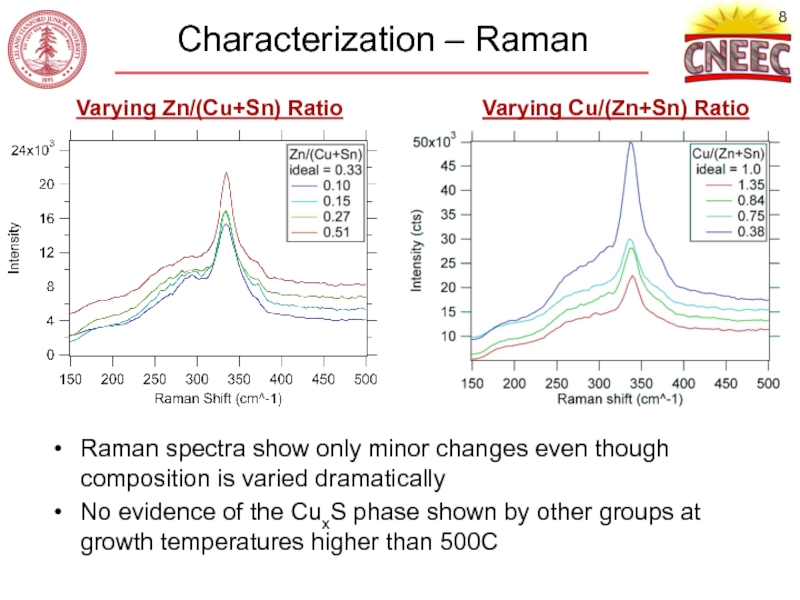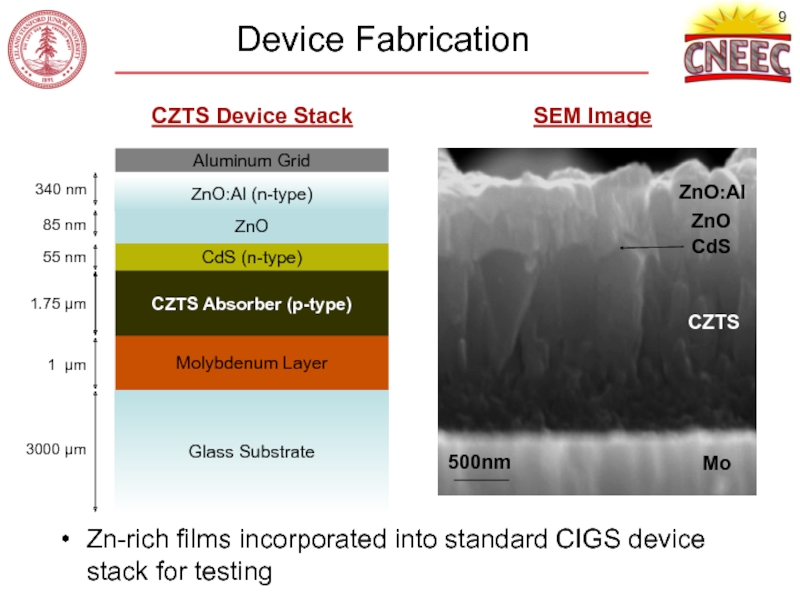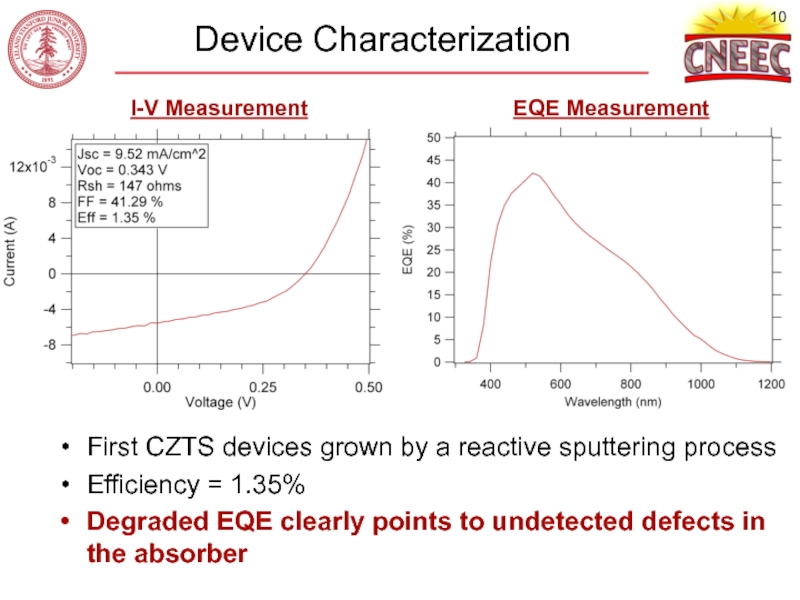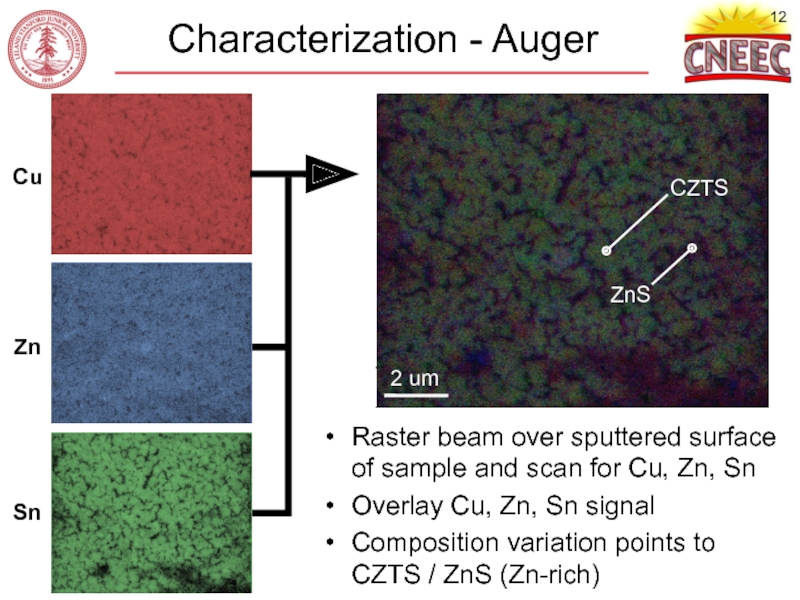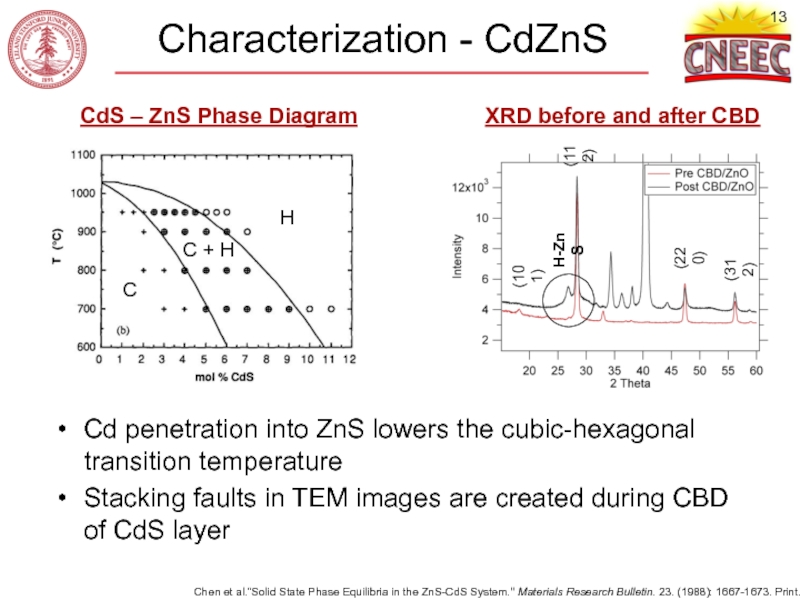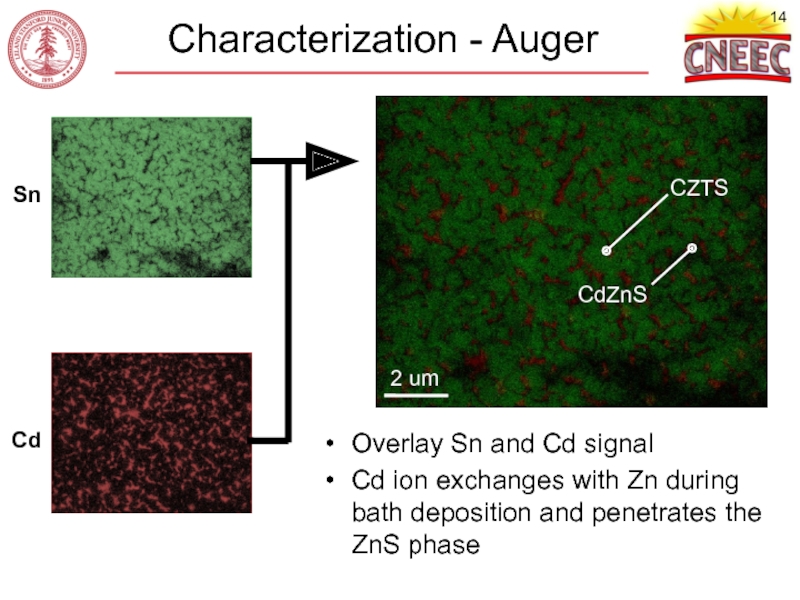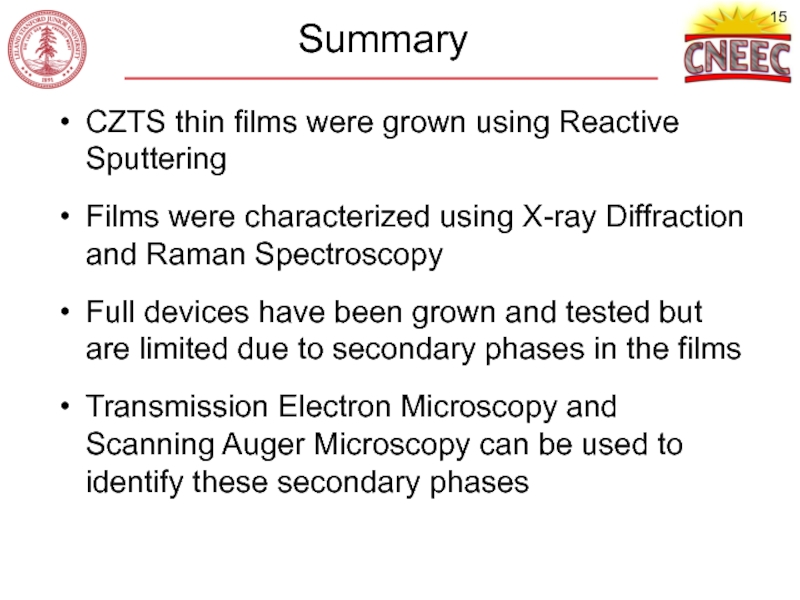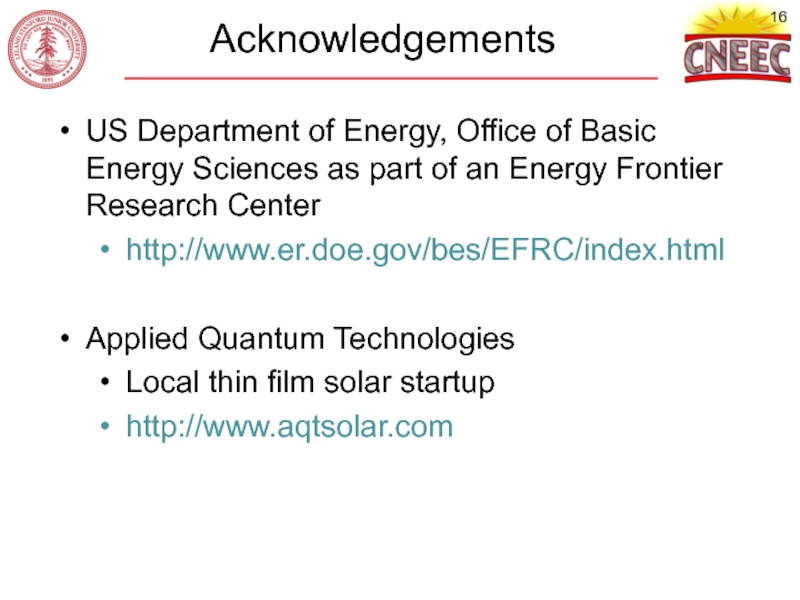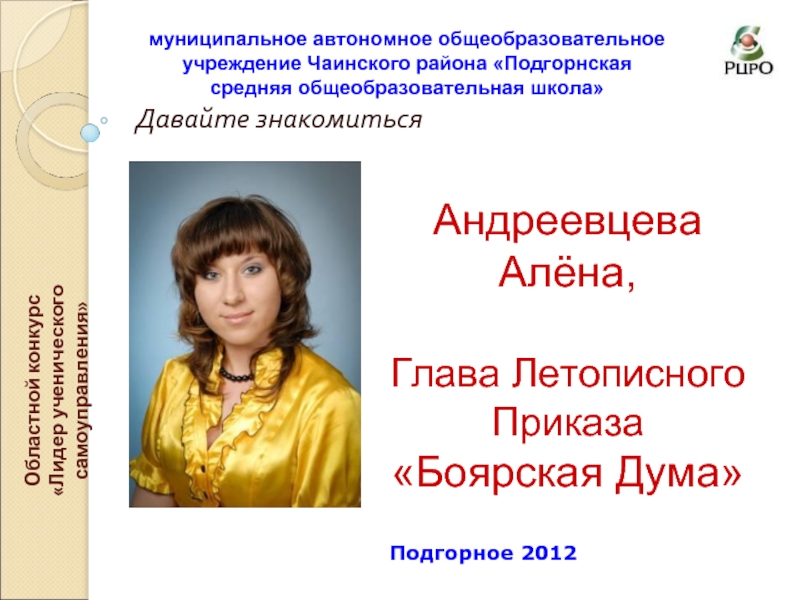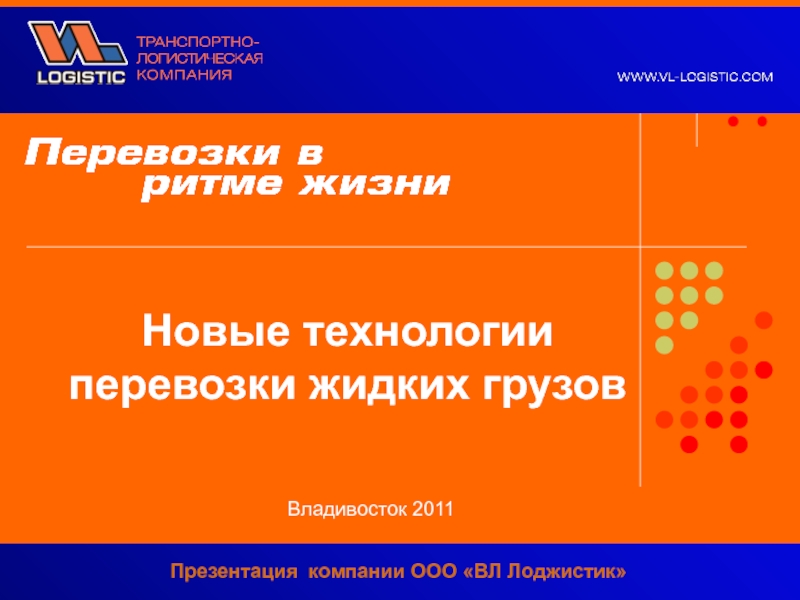Vardaan Chawla, Stacey Bent, Bruce Clemens
April 7th, 2010
Center on Nanostructuring for Efficient Energy Conversion
Materials Science and Engineering
Stanford University
- Главная
- Разное
- Дизайн
- Бизнес и предпринимательство
- Аналитика
- Образование
- Развлечения
- Красота и здоровье
- Финансы
- Государство
- Путешествия
- Спорт
- Недвижимость
- Армия
- Графика
- Культурология
- Еда и кулинария
- Лингвистика
- Английский язык
- Астрономия
- Алгебра
- Биология
- География
- Детские презентации
- Информатика
- История
- Литература
- Маркетинг
- Математика
- Медицина
- Менеджмент
- Музыка
- МХК
- Немецкий язык
- ОБЖ
- Обществознание
- Окружающий мир
- Педагогика
- Русский язык
- Технология
- Физика
- Философия
- Химия
- Шаблоны, картинки для презентаций
- Экология
- Экономика
- Юриспруденция
Identification of Defects and Secondary Phases in Reactively Sputtered Cu2 ZnSnS4 Thin Films презентация
Содержание
- 1. Identification of Defects and Secondary Phases in Reactively Sputtered Cu2 ZnSnS4 Thin Films
- 2. Outline Motivation
- 3. Motivation – Phase Equilibrium
- 4. Motivation – Crystal Structure
- 5. Experimental Approach
- 6. Characterization - XRD
- 7. Characterization - XRD
- 8. Characterization – Raman
- 9. Device Fabrication
- 10. Device Characterization
- 11. Characterization - TEM
- 12. Characterization - Auger
- 13. Characterization - CdZnS
- 14. Characterization - Auger
- 15. Summary CZTS
- 16. Acknowledgements US
- 17. Questions Questions?
Слайд 1Identification of Defects and Secondary Phases in Reactively Sputtered Cu2ZnSnS4 Thin
Слайд 2Outline
Motivation
Problems with characterization of thin films
Experimental approach
Results
X-ray diffraction
Raman Spectroscopy
Transmission Electron Microscopy
Scanning
Summary & Acknowledgements
Слайд 3Motivation – Phase Equilibrium
CZTS is a line compound between Cu2SnS3 and
Theoretically even a 2-3% compositional variation could lead to phase separation
Ternary Phase Diagram
Binary Phase Diagram
Olekseyuk, I.D. "Phase Equilibria in the Cu2S-ZnS-SnS2 System." Journal of Alloys and Compounds. 368. (2004): 135-143. Print.
CZTS
Слайд 4Motivation – Crystal Structure
Crystal structures of secondary phases similar to CZTS
All
Low intensity peaks cannot be seen easily in thin films
Theoretical XRD Patterns of CZTS, Cu2SnS3, and ZnS
Слайд 5Experimental Approach
Substrate
Cu
Zn
Sn
Introduce H2S into chamber during sputter deposition
Sulfur is incorporated into
Expect to see higher densities and improved film quality
Reactive Sputtering
Слайд 6Characterization - XRD
Varying Zn/(Cu+Sn) Ratio
Zn/(Cu+Sn) ratio is varied while holding Cu/Sn
Impossible to determine difference between CZTS, CTS, and ZnS from XRD pattern
(101)
(200)
(220)
(312)
(112)
Olekseyuk, I.D. "Phase Equilibria in the Cu2S-ZnS-SnS2 System." Journal of Alloys and Compounds. 368. (2004): 135-143. Print.
Слайд 7Characterization - XRD
Varying Cu/(Zn+Sn) Ratio
Cu/(Zn+Sn) ratio is varied while holding Zn/Sn
Need to get very far off 2:1:1 stoichiometry before any CuxS phases can be seen
CuxS can be removed with KCN etch
(101)
(200)
(220)
(312)
(112)
Olekseyuk, I.D. "Phase Equilibria in the Cu2S-ZnS-SnS2 System." Journal of Alloys and Compounds. 368. (2004): 135-143. Print.
Слайд 8Characterization – Raman
Varying Zn/(Cu+Sn) Ratio
Raman spectra show only minor changes even
No evidence of the CuxS phase shown by other groups at growth temperatures higher than 500C
Varying Cu/(Zn+Sn) Ratio
Слайд 9Device Fabrication
Glass Substrate
3000 µm
Molybdenum Layer
1 µm
1.75 µm
CdS (n-type)
55 nm
ZnO:Al (n-type)
340 nm
Aluminum
CZTS Absorber (p-type)
CZTS Device Stack
Zn-rich films incorporated into standard CIGS device stack for testing
ZnO
85 nm
ZnO
ZnO:Al
CdS
CZTS
Mo
SEM Image
Слайд 10Device Characterization
I-V Measurement
EQE Measurement
First CZTS devices grown by a reactive sputtering
Efficiency = 1.35%
Degraded EQE clearly points to undetected defects in the absorber
Слайд 11Characterization - TEM
500nm
Detrimental secondary phase interspersed in CZTS matrix
Stacking faults in
Слайд 12Characterization - Auger
Raster beam over sputtered surface of sample and scan
Overlay Cu, Zn, Sn signal
Composition variation points to CZTS / ZnS (Zn-rich)
2 um
Cu
Zn
Sn
CZTS
ZnS
Слайд 13Characterization - CdZnS
Cd penetration into ZnS lowers the cubic-hexagonal transition temperature
Stacking
CdS – ZnS Phase Diagram
(101)
H-ZnS
(220)
(312)
(112)
XRD before and after CBD
C
C + H
H
Chen et al.“Solid State Phase Equilibria in the ZnS-CdS System." Materials Research Bulletin. 23. (1988): 1667-1673. Print.
Слайд 14Characterization - Auger
Sn
Cd
Overlay Sn and Cd signal
Cd ion exchanges with Zn
CZTS
CdZnS
2 um
Слайд 15Summary
CZTS thin films were grown using Reactive Sputtering
Films were characterized using
Full devices have been grown and tested but are limited due to secondary phases in the films
Transmission Electron Microscopy and Scanning Auger Microscopy can be used to identify these secondary phases
Слайд 16Acknowledgements
US Department of Energy, Office of Basic Energy Sciences as part
http://www.er.doe.gov/bes/EFRC/index.html
Applied Quantum Technologies
Local thin film solar startup
http://www.aqtsolar.com
